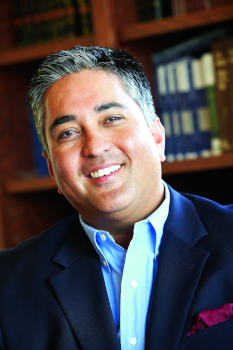
Candido Palomarez is a husband, father, and coach. As a Family CFO at Candido, Inc., he takes a holistic approach to coaching clients in wealth management. He specializes in Christian business owners, private school families, widows, and high earners. Candido and his family are parishioners of the Church of St. Anne in Hamel.
Below, he highlights why you may want to consider using IRA required minimum distributions for your charitable giving.
“There’s no such thing as a free lunch.” It’s unclear as to whom first uttered these words, but they’ve made their way into our culture of common sense. But what if there was such a thing?
As you probably know, once you reach a certain age (73), you’re obligated to take a required minimum distribution (RMD) from your traditional IRA. For most people, RMDs provide the income they need to live in retirement. But for those who don’t need the income, this adds a wrinkle to their financial plans: They must take out the money and pay the associated ordinary income tax (not capital gains tax).
A Unique Opportunity
For donors in the know, however, RMDs offer a unique giving opportunity: qualified charitable distributions (QCDs).
Since 2006 the IRS has allowed donors to use IRA distributions to make charitable gifts — and avoid paying income taxes on that money. The tax benefits can be substantial.
Consider the most extreme example: a donor in the highest federal and Minnesota tax brackets of 37% and 9.85%, respectively, makes a $105,000 QCD (the maximum allowed). Without this rule, this donor would owe approximately $49,000 in income taxes — that’s $49,000 more for a donor to give to the causes he or she cares about.
Regardless of your own tax bracket and distribution amount, you, too, can enjoy the tax benefits of giving with your IRA.
Some technical tidbits…
- The distribution check must be made payable to the charity, not you.
- You still need a receipt from the charity for tax purposes.
- QCDs are not allowed to donor advised funds.
- However, QCDs can be made to both a donor designated fund and/or perpetual endowment.
- You don’t have to wait until age 73. You can start a QCD strategy at age 70½.
- Lastly, you cannot take a QCD from company retirement plan (e.g., 401(k) plan). It must be made from a traditional IRA.
Because of how technical this strategy is, it’s highly recommended that you consult with your tax advisor to avoid a mistake that could result in penalties or other negative consequences
Takeaway: If you intend to make charitable contributions and do not need your IRA for living expenses, consider this unique giving opportunity. Let your IRA make the contribution and take advantage of this rare “free lunch.”
Candido, Inc., 14741 51st Pl. N., Plymouth, MN 55446. 763-428-1000. Securities and investment advisory services offered through Woodbury Financial Services, Inc. (WFS) member FINRA/SIPC. WFS is separately owned and other entities and/or marketing names, products or services referenced here are independent of WFS. WFS does not provide tax or legal advice.
The information presented above by the Catholic Community Foundation of Minnesota (CCF) is general and educational in nature. CCF and its staff do not provide individualized legal or tax advice. We recommend you consult with your attorney or tax professional regarding your unique personal situation.

